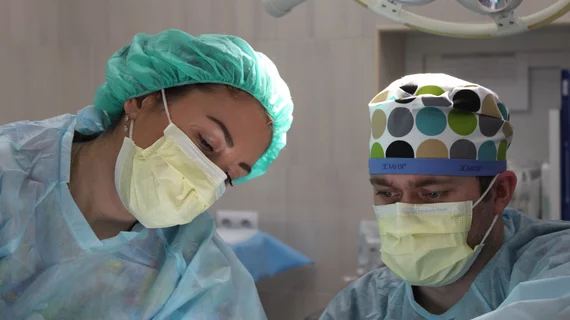Biolimus-coated balloons can effectively treat small-vessel coronary artery disease, new first-in-human study confirms
New biolimus-coated balloons (BCBs) are associated with better percutaneous coronary intervention (PCI) outcomes than uncoated balloons when treating small-vessel coronary disease, according to a new first-in-human study published in JACC: Cardiovascular Interventions.[1]
“Drug-coated balloons are a safe and effective option for patients undergoing PCI for the treatment of small-vessel coronary disease and in-stent restenosis, but prior randomized studies have exclusively used paclitaxel-coated devices,” wrote lead author Kai Xu, General Hospital of Northern Theater Command in China, and colleagues. “Biolimus (Biosensors International) is a semisynthetic sirolimus analogue, specifically modified to increase lipophilicity and to optimize local drug delivery from both stents and balloons.”
The BIO-RISE CHINA study included data from 209 patients with small-vessel coronary artery disease. Patients were treated at one of 10 different facilities in China from May 2018 to July 2020. While 106 PCI patients with a mean age of 61.3 years old were treated with a BCB, 103 patients with a mean age of 61.6 years old were treated with plain uncoated balloon angioplasty.
The study’s primary endpoint, in-segment late lumen loss (LLL) after nine months, was lower among patients treated with a BCB (0.16 ± 0.29 mm) than among patients treated with an uncoated balloon 0.30 ± 0.35 mm). In addition, late luminal enlargement was three times as likely among BCB patients than it was among the uncoated balloon patients. No coronary aneurysms were seen in either group.
“LLL is a validated surrogate efficacy endpoint that has been extensively used in the initial assessment of new vascular interventional devices,” the authors wrote. “We observed lower values than predicted in both study groups, although the absolute between-group difference used in the original power calculation was preserved, and the sample size was more than sufficient to confirm superiority of the BCB.”
The authors did emphasize that additional research is still required. BCBs still need to be compared to paclitaxel-coated balloons, for instance, with an eye on clinical outcomes.
This research was originally presented at TCT 2021 as a late-breaking clinical trial.
Related Interventional Cardiology Content:
Regulatory Roundup: FDA clears several new solutions, including Apple’s latest AFib offering
VIDEO: Advances in left atrial appendage occlusion technology
Cardiologists push back on FDA’s thyroid monitoring/contrast media proposal
Reference:

